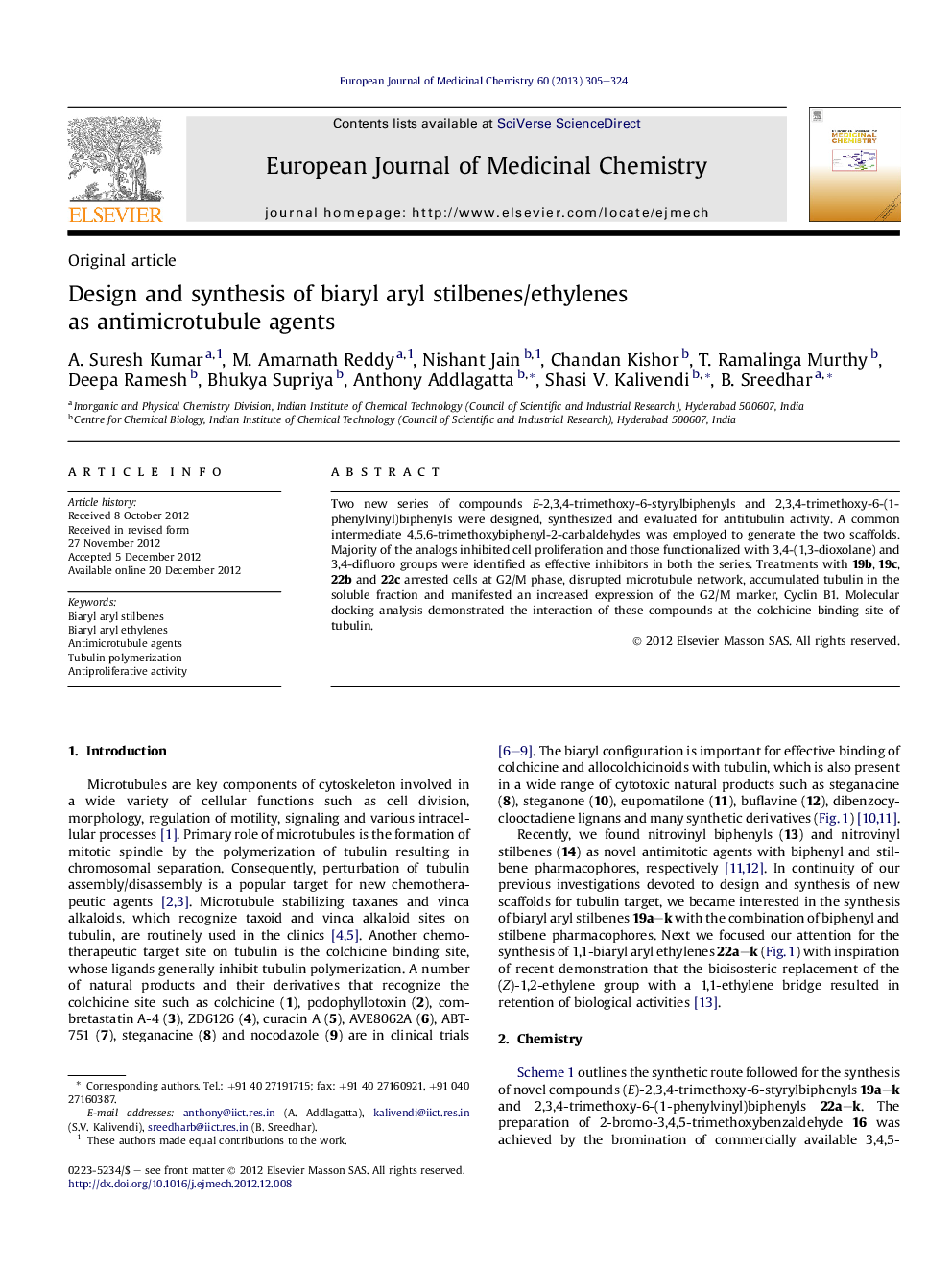| کد مقاله | کد نشریه | سال انتشار | مقاله انگلیسی | نسخه تمام متن |
|---|---|---|---|---|
| 1399278 | 1501156 | 2013 | 20 صفحه PDF | دانلود رایگان |

Two new series of compounds E-2,3,4-trimethoxy-6-styrylbiphenyls and 2,3,4-trimethoxy-6-(1-phenylvinyl)biphenyls were designed, synthesized and evaluated for antitubulin activity. A common intermediate 4,5,6-trimethoxybiphenyl-2-carbaldehydes was employed to generate the two scaffolds. Majority of the analogs inhibited cell proliferation and those functionalized with 3,4-(1,3-dioxolane) and 3,4-difluoro groups were identified as effective inhibitors in both the series. Treatments with 19b, 19c, 22b and 22c arrested cells at G2/M phase, disrupted microtubule network, accumulated tubulin in the soluble fraction and manifested an increased expression of the G2/M marker, Cyclin B1. Molecular docking analysis demonstrated the interaction of these compounds at the colchicine binding site of tubulin.
Two new series of compounds E-2,3,4-trimethoxy-6-styrylbiphenyls and 2,3,4-trimethoxy-6-(1-phenylvinyl)biphenyls were designed, synthesized and evaluated for antitubulin activity. Effective compounds interacted at colchicine binding site of tubulin.Figure optionsDownload as PowerPoint slideHighlights
► Twenty two biaryl aryl stilbenes/ethylenes were designed and synthesized.
► Most of the compounds inhibited cell proliferation against 4 cancer cell lines.
► Potent derivatives arrested cells at G2/M phase, disrupted microtubule network.
► Investigated compounds dock at the colchicine binding site of the tubulin.
Journal: European Journal of Medicinal Chemistry - Volume 60, February 2013, Pages 305–324